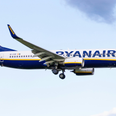We need food and drink to survive, to nourish us and to keep us in tip-top shape. But did you ever wonder about the history behind certain Irish breads?
This week we’re bringing you the history behind the Waterford Blaa.
A pride of Waterford, the Blaa dates back to the 17th century and the arrival of the Huguenots. The Huguenots were were members of the Protestant Reformed Church of France.
During the 17th century, Waterford was regarded as a key trading city for all sorts of wares including flour and butter that was shipped to and from the UK, France, Italy and Spain.
According to oral history of that period, the Huguenots introduced a new type of white bread that was made from leftover bits of dough. Waterford bakers M&D note that the Blaa was then called “blaad” or “blanc”, the French for “white.”
During the 19th century the Blaa bread gained popularity, particularly amongst the poor when Brother Edmund Rice the founder of the Christian Brothers began making it in Mount Sion in Waterford City in 1802.
Because the ingredients to make a simple Blaa were so cheap, it’s popularity continued to rise, with its recipe being handed down from generation to generation.
M&D Bakery have been producing delicious Blaas since 1984. In November, 2013 the Waterford Blaa term was given a special protection from the EU meaning that no one can produce a Blaa under another name.
Previously:
- Bloody Mary
- Carpaccio
- Chicken à la King
- Eggs Benedict
- Granny Smiths
- Gummy Bears
- Margherita Pizza
- Marzipan
- Melba Toast
- Nachos
- Waffles
Images via M&D Bakery














































